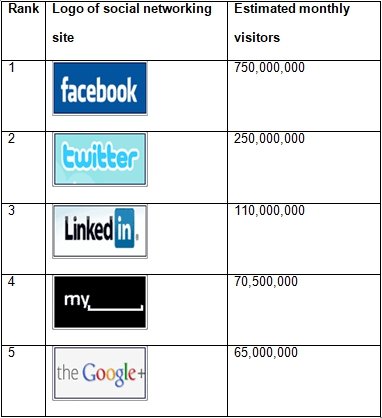Executive summary
Strategic management practice has emerged as important framework that influences companies’ profitability and overall success (Abu Bakar et al., 2011, p.140). Latest research has shown that if best implemented, strategic management can lead to positive influence. Torun (2011) named Facebook as one of those large global companies where strategic management practice has been best implemented to ensure profitability and dominance in the social networking industry (pp. 3-4).
It is from the above motivating scenario that this study purposed to carry out a critical evaluation and discussion of Facebook’s strategic management practice. The following was the breakdown of the paper:
The author began with an introduction that reviewed the background literature and revisited the problem statement. This was succeeded by a critical evaluation of the five major strengths. Following this was the evaluation of literature on four weaknesses. Having tackled the body of the paper, the writer documented suggestions to aid in addressing the identified limitations and improve the existing strengths. The paper ended with a conclusion that summarized the main study findings.
Introduction
Halibozek and others (2007) elucidated that in Today’s fast-paced business environment, there were many looming threats (p.159). These threats emanated from factors such as financial crises, complexity, the existence of many laws and regulations, the large volume of daily transactions and the stiff competition resulting from globalization.
To sum up the many challenges facing modern-day businesses, one manager pointed out that there were a myriad of risks and opportunities which organizations were in positions to tackle but which needed clear understanding and focus to ensure sustainability.
To provide a solution to the described problem, the writer established that strategic management practice provided a fair model of tackling the above case. To define it, Pock (2007, p.6) stated that strategic management practice defined “the process of formulating and implementing company strategies”.
To simplify it, it was also defined as the planned analysis of both the external and internal factors associated with an organization, its customers and competitors to provide the framework of achieving and retaining optimum management engagements. Lawrie (2005) expounded on the meaning of strategic management by asserting that it provided for the involvement of the entire company in managing its processes, people, and products towards achieving successful objectives and goals (p.8).
The following were delineated as the minimum components of any strategic management practice: formulation of a mission statement, environmental scanning, resource allocation, development of an action plan, resource allocation and performance measurement (Lawrie, 2005, pp.8-9).
To help managers in the formulation and maintenance of successful strategic management practice, this business report selected Facebook as a case scenario. The selection was backed up the fact that Facebook was launched in the year 2004 and by late 2011, it had emerged as the leading and the most visited social networking site (Karlicek et al., 2012).
To add, its success story showed that the site was second to Google on the most visited sites in the World with over 800 million users. Interestingly, the site ranked higher than Google+ as was evidenced in the monthly statistics below (Ebiz MBA, 2012).
Table 1 showing the monthly rank of social networking sites as at August 11, 2012

Source: Ebiz MBA, 2012.
The succeeding paragraphs provided an informed critical evaluation of the identified strengths and weaknesses of Facebook’s strategic management practice.
Critical evaluation of facebook strengths and weaknesses
Strengths
Aggressive and innovative culture
Since its launch in 2004, several key developments have been accomplished by Facebook thus weaving it into a fabric of culture and human media. This was also supported by the study conducted by Hitt and others (2012) who acknowledged that the Facebook team had invented many new features which had transformed it into a site that played pivot roles in people’s daily lives. In one of its nice features, the site had allowed users to ‘create a Profile Badge’ which can be used to host one’s blog, website and at the same time act as a business card.
Figure 1 showing the ‘Profile Badge’, one of the many features that have proved an instant hit for Facebook

In another example, the author found out that the year 2009 saw the ‘like’ element incorporate on its site to enable users express their liking of social content by a click of a button.
Figure 1 showing the incorporation of the ‘like’ element on the Facebook platform

Source: Facebook, 2012.
Technological know-how
Maver and Popp (2009) provided proof of the technological know-how that has enabled Facebook handle the millions of daily visitors on its site without failure. The two researchers achieved this when they brought to users’ attention that Facebook embraced the use of a customized Apache, Linux, MySQL, and PHP operating interfaces (Maver & Popp, 2009, p.). These in turn facilitated interoperability, scalability and standardization of URLs (Deans, 2009, p.187). To add, Facebook had bought over 12,000 servers to store users’ data.
Strategic acquisitions and partnerships
According to the findings of a latest study by Daft and Marcic (2012, p.192) Facebook’s top management team boasted of a renowned reputation of negotiating lucrative partnerships. This strength was corroborated by the assertion that its management was able to negotiate a successful partnership with Microsoft which ended with Microsoft contributing millions of dollars to facilitate its growth.
This finding was also supported by Weintraub (2011) when he said that the negotiations between Facebook and Microsoft in 2007 led to Microsoft taking an equity stake valued at $240 million. In addition, Microsoft accepted to enter into an international advertising campaign with Facebook which attracted membership of millions of marketers who wanted to create awareness on the existence of their products (Weintraub, 2011).
Provision of cheaper adverts
Various studies alluded to the notion that Facebook had cemented its popularity by encouraging a culture of outside companies using its platform to provide services to their target members (Merisavo et al., 2007). This reasoning was interchangeably interpreted to mean that most persons harbouring intentions of creating the next eye-catching social networking sites have continued deactivating their wishes the moment they still used Facebook to reach their customers.
Moreover, it has been argued that Facebook adverts offered a unique competitive advantage as compared to those offered by rivals. This was due to the reason that advertisers were offered unique opportunities of targeting their users based on their genders, geographical locations, ages, interests, and even religion. This positioning had enabled Facebook to attract many advertisers thus strategically positioning it to have a bigger share of the anticipated 2015 $8.3 billion revenue from the Social Media Ads.
Simplicity/ease of use
One of the major strengths of the improved Facebook platform is the ease at which even new entrants can interact with its multiple applications. After signing in, users are presented with a ‘clean and easy’ to use layout. To add, major elements such as a friend’s profile provide quick updates on any engagements that users may have participated in. This is via the ‘wall’ element.
Weaknesses/Limitations
Little management expertise
There is an on-going debate on whether Facebook has the requisite management personnel to drive its vision forward. While some studies argue that lack of management expertise has contributed a primary weakness to its operations, some have come out to counteract this assumption.
Those in support of the lack of management expertise cited the unpopularity and the arrogance of its founder (Zuckerberg) as the core weakness that threatened its rapid expansion. Contrary to this, those opposing acknowledge that its owner has done a commendable job of bringing executives who surpassed his management skills. Examples of these include David Ebersman, who possesses vast experience as a Chief Financial Officer, and Sheryl Sandberg who has a bias in the operations field.
Privacy issues
Despite allowing individual members to configure their security settings, it has been established that many people do not still understand how to protect some of the data on this site (Mui, 2011). There are many cases where users are sharing information which ought to have been classified as confidential. This uncontrolled and exposure of personal data has led to the emergence of start-up social networking rivals such as Google+, who are capitalizing on this shortcoming to pose a serious threat to Facebook’s future survival and dominance.
To show how serious this weakness is, a Wallstreet Journal of 2010 revealed that privacy issues had triggered disagreements in the company which threatened to force Facebook’s Chief Executive, Mr. Zuckerberg into scaling efforts that encouraged users to share more of their information publicly (Vascellaro, 2010).
Less customization of pages
Facebook has been accused of allowing users less freedom to customize pages (Hall & Rosenberg, 2009, p.68). Most users wishing to look ‘unique’ with regard to their profile appearances have often been annoyed by the existence a single uniform profile page. In a related incident, it has been ascertained that Facebook relied on boxes to hide multiple applications created by users. This was done to create few clusters.
Flash distractions and lack of a real-time feedback mechanism
Salvendy (2012) postulated that with the provision of advertising services came the annoying animated flash graphics on Facebook (p.1390). These have proved a nuisance and distracting to some users.
Elsewhere, Facebook has had a shortcoming of lacking an online Help Centre where users’ inquiries or product suggestions can get quick response. The site has only availed Frequently Asked Questions (FAQs) which are limited and ineffective with regard to user inquiries.
Recomendations for improvement
Having discussed the strengths and weaknesses of the strategic management practice employed by Facebook, the following recommendations were advanced to assist in mitigating the weaknesses and improve on the strengths:
- Facebook should make efforts to address the problem of animated banners distracting users by changing the positioning and interaction of the banners with users. This will prevent the annoyance of users.
- Facebook should make efforts to provide a real-time online help centre to improve on the level of its feedback. Direct and quick response will show that the company values its users and can be used as a marketing and customer retention tool.
- With regard to strategic management, it is suggested that the company continues with its current trend of hiring highly experienced and successful managers and entrepreneurs to take its vision to its next level. This will enable the company to retain its leadership role despite the existence of stiff competition from new entrants such as Google+.
Conclusion
At the onset of this study, the author had purposed to carry out a critical evaluation and discussion of the strategic management practices in Facebook. To summarize the major findings, the author points out that Facebook presented a successful story of how best strategic management practices can propel a company into a powerful force. This is the case because of its innovative plans that have captured users’ attention thus propelling it into a social networking power house. As such, the 2012 Facebook can be best described by use of the following paradigms: utter dominance, rapid rise, high marketing power and global reach (Weintraub, 2011).
Notwithstanding the success story above, it was also established that Facebook possessed a number weaknesses that included the failure to neither control privacy nor allow for customization of pages. These have partially caused disrepute to its operations. Arguably, as Hitt and his friends (2012) reasoned, these trends can be explained by the famous saying that popularity has its ups and downs (p.240).
References
Abu Bakar, A.H. et al. (2011). Implementation of strategic management practices in the Malaysian Construction Industry. Pakistan Journal of Commerce and Social Sciences, 5 (1), pp.140-154.
Daft, R.L. & Marcic, D. (2012). Understanding management. 8th edn. Mason, OH: Cengage Learning.
Deans, P.C. (2009). Social software and web 2.0 technology trends. USA: Idea Group Inc (IGI).
Ebiz MBA (2012). Top 15 most popular social networking sites. Web.
Halibozek, E., Jones, A. & Kovacich, G.L. (2007). The corporate security professional’s handbook on terrorism. Oxford, UK: Butterworth-Heinemann.
Hall, S. & Rosenberg, C. (2009). Get connected: The social networking toolkit for business. Madison, WI: Entrepreneur Press.
Hitt, A., Ireland, R.D. & Hoskisson, R.E. (2012). Strategic management: Concepts and cases: Competitiveness and globalization. Mason, OH: Cengage Learning.
Karlicek, M. et al. (2012). Social networking sites in the Czech Republic: An empirical study. Management & Marketing Challenges for the Knowledge Society, 7(1), pp. 15-28.
Lawrie, J.J. (2005). Strategic planning and management in transit agencies. Washington D.C: Transportation Research Board.
Maver, J.J. & Popp, C. (2009). Essential Facebook development: Build successful applications for the Facebook platform. Boston: Addison-Wesley Professional.
Merisavo, M. et al. (2007). An empirical study of the drivers of consumer acceptance of mobile advertising. Journal of Interactive Advertising, 7(2), pp. 41-50.
Mui, C. (2011). Facebook’s privacy issues are even deeper than we knew. Forbes.
Pock, A.V. (2007). Strategic management in Islamic finance. Wiesbaden, Germany: Springer.
Salvendy, G. (2012). Handbook of human factors and ergonomics. 4th edn. New Jersey: John Wiley & Sons.
Torun, D. (2011). How social networking (Facebook and Twitter) can be used for tourism marketing. Norderstedt, Germany: GRIN Verlag.
Vascellaro, J.E. (2010). Facebook grapples with privacy issues. The Wall Street Journal.
Weintraub, M. (2011). Killer Facebook ads: Master cutting-edge Facebook advertising techniques. New Jersey: John Wiley & Sons.